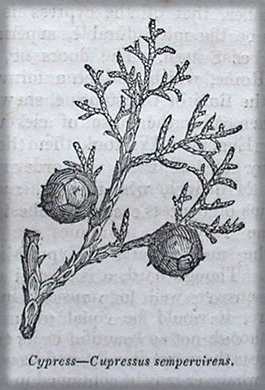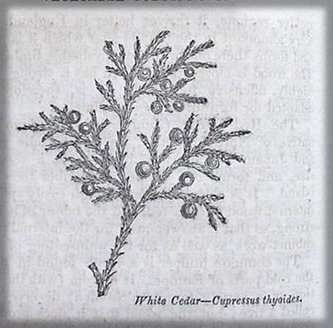
Timber: Cypress
There are twenty-two species of CYPRESS. It will be necessary to mention only two of these; the evergreen cypress (Cupressus sempervirens) and the white cedar (Cupressus thyoides).
EVERGREEN CYPRESS
There are two sorts, upright and spreading. The spreading variety is bigger and therefore more valuable as a timber tree. It is a native of south-east Europe, the Levant, China, and some parts of Asia. It thrives best in a war, sandy or gravelly soil. It is very hardy; Evelyn says that he had a thousand cypress trees in his garden, and did not lose more than three or four of them during the usually severe winters of 1663 and 1665.
Of all timber, cypress is thought to be the most durable, superior even to cedar. The doors of St. Peter's Church in Rome showed no sign of decay when, after eleven hundred years, Pope Eugenius IV took them down to replace them by gates of brass. Athenians buried their heroes in coffins of cypress, and Egyptian chests or coffins in which mummies are found are usually of the same material.
Cypress is a handsome timber. Though hard, it is elastic, and therefore would answer well for musical instruments. For furniture, it would be equal to mahogany, for, though not so beautiful in its colour, it is stronger, resists the worm equally, and its odour repels insects from whatever may be contained in a cabinet or chest made of it. For building, there is no timber superior to the cypress, which lasts almost as long as stone itself.

WHITE CEDAR
This tree is a native of America, where it grows large but slowly. It is eighty years before it is fit for timber. Even then, though it answers for hoops, small boats, roofing, and some other purposes, it does not appear very worthy of cultivation as a timber tree. But it is hardy, and forms a good variety in clumps of evergreens.

summarised from "The Library of Entertaining Knowledge - Timber trees" (1829), pub. Charles Knight, Pall Mall.
ND, habitat21
big turbines
small turbines